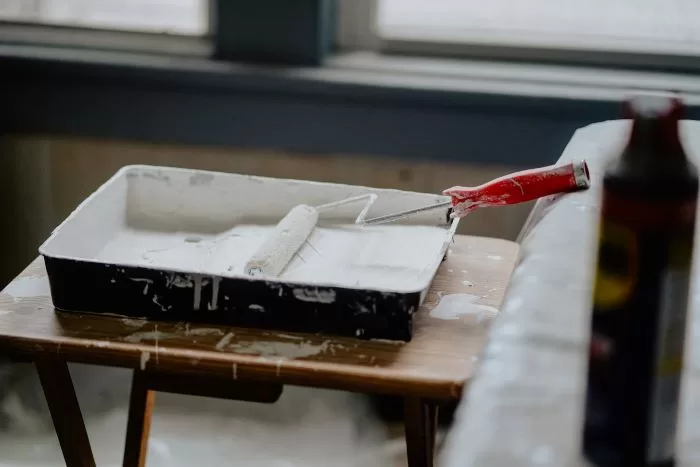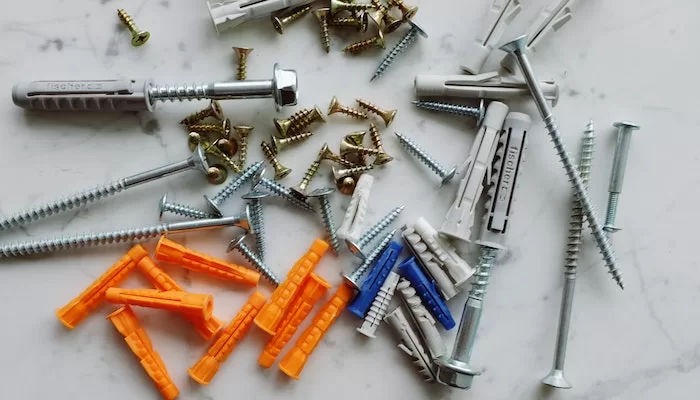Lifestyle
Do It Yourself: 4 Home Improvement Projects You Don’t Need To Hire a Professional For

Being a homeowner is a dream come true for many people, but when renovations are required, costs skyrocket — especially when professional assistance is sought. Whether you own a home or rent an apartment, repairs are unavoidable no matter how cautious you are. However, with the right skills and guidance, you can tackle some renovations yourself, save money and gain a sense of accomplishment.
Even if spending long hours weekly on DIY home maintenance projects isn’t a popular hobby, knowing how to do a few fixes will tremendously reduce costs and save you endless appointment bookings with a contractor. So here are four home renovations you can handle confidently without needing a professional
Revive & Refinish Hardwood Floors
Usually, unfinished wood flooring is susceptible to liquid stains like cola, wine, and sauce. That’s where sanding and refinishing the hardwood flooring come in. They help transform tired-looking floors into fresh, renewed surfaces. Likewise, revamping your hardwood floors can breathe new life into your home’s aesthetics and increase its resale value.
And if you’re doing a full renovation, opt for a polyurethane or epoxy construction adhesive or wood glue for a laminate installation, parquet flooring, and other applications. A simple oiled finish keeps those pesky stains at bay.
You could use a two-part adhesive if you need a strong bond or to join materials tightly. This type of polyurethane bond can fill holes and gaps while maintaining a firm grip on the bound items.
Pro tip: Choose an adhesive sealant silicone for surfaces or materials easily exposed to moisture, humidity, or water for long-lasting protection.
Unclog the Garbage Disposal

Source: Pexels
Dealing with clogged garbage disposal may seem daunting, but it can often be resolved without paying a pro. To do this, locate the reset button under the unit and press it to reset the disposal. Alternatively, manually rotate the blades by inserting a wrench into the unit’s hole.
The third option is to remove the obstructions physically. Grab a flashlight and inspect the sink for anything causing the blockage. Even though the disposal should be unplugged, pull out anything foreign with pliers or tongs. Refrain from using your hands.
And if none of the methods above work, rotate the blades with a garbage disposal wrench. It’s intended to fit into the disposal’s main chamber and clear out whatever clogs things up. Plug in the garbage disposal, fill the sink with cold water, and give it a whirl.
Repair a Leaking Toilet
One common problem with toilets is that they are always running. The constant flow of water is inconvenient and can harm the environment. To deal with this, begin by troubleshooting the problem. Turn off the water supply to the toilet (the small knob near the toilet). Remove the tank lid to reveal the toilet’s water control system, and inspect the flapper between uses to ensure it is properly sealed. While at it, look for any debris or dirt deposits accumulated over time on the fill valve.
The float level should also be checked. If it is set too high, it may cause water to drain. This is because the water level is higher than the fill tube. If no adjustment or cleaning helps, it’s time to replace the parts. A toilet rebuild kit with simple instructions is available at any hardware store.
Fixing a running toilet is important as it can save up to 200 gallons of water daily, significantly reducing water bills.
Repair a leaky Faucet.
One of the most common household repairs is repairing a leaky faucet. It may appear to be a minor issue, but all those drips add up.
Stopping a leaky faucet without professional assistance can be a simple process depending on the type of faucet. Begin by cutting off the water supply to the faucet. There is usually a shut-off valve nearby. If not, you can always turn off the water to the entire house and then turn it back on later. The house shut-off is frequently located in the basement or laundry room.
The average home wastes approximately 10,000 gallons of water annually due to various leaks and drips. Aside from the fact that it’s enough to fill a swimming pool, it also has a negative financial impact.
Handling simple home improvement yourself & on time as a homeowner can increase your home’s ROI and benefit the environment. Other projects you could handle are hanging a shelf, replacing a hole in the drywall, painting, etc. So wear those safety gear, roll up your sleeves, get the right tools, and transform your home. You can use it as a family get-together project too.


















































